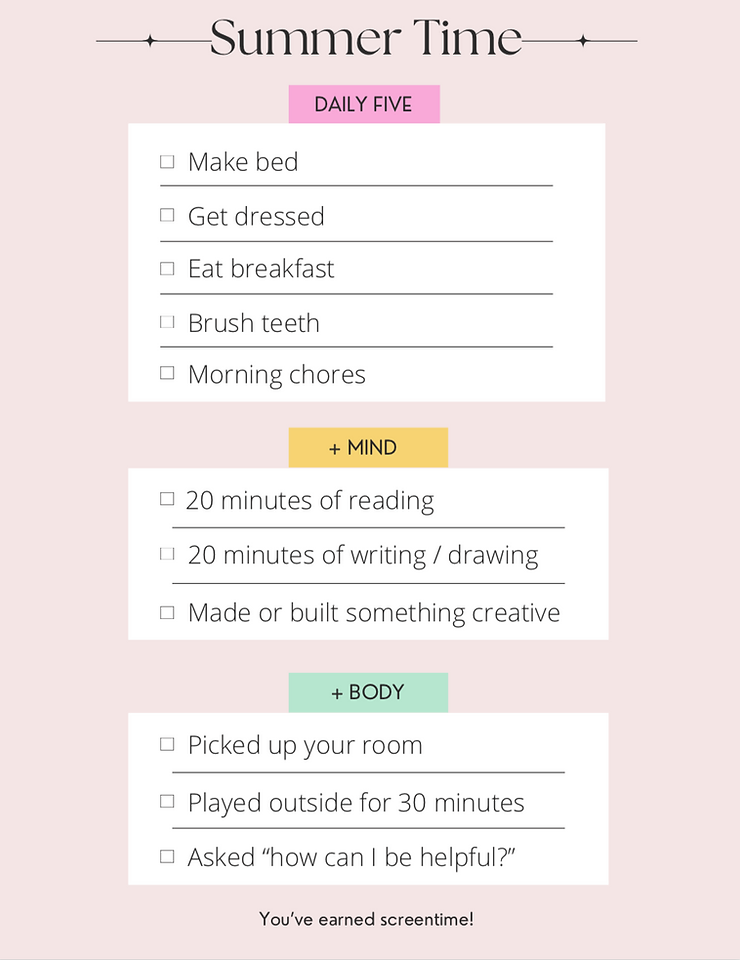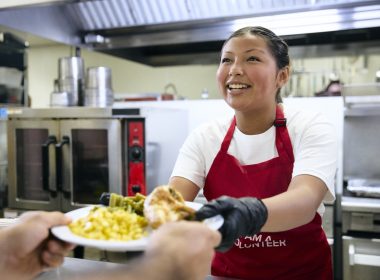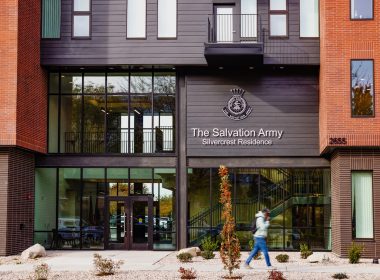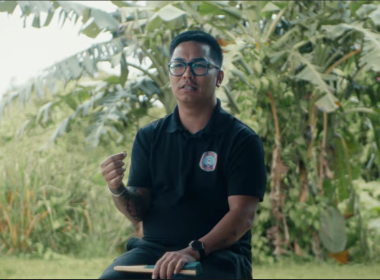Several years ago, we started a task list for our three young boys (9, 7 and 3 at the time) in order for them to earn some screentime.
It was summer break and I needed some structure for our days. I had spent the first summer after my older boys had been in school full time declaring myself as “fun summer mom,” thinking their days should be the antithesis of structured school days—that they should be free and play outside all day. It’s more my natural bent anyway—to just wake up and see where the wind takes us that day.
The problem with that was, it’s fun until it’s not. And they don’t want to play outside all day. They’re hot and hungry and tired of each other and want friends over every second of the day. The chaos of unplanned days and them looking to me to create fun was mentally taxing.
So the next summer, I took some tips from my close friend who thrives in structure and who had gone before me in having school-age kids home and I created some structure for them and for myself and it felt like a night and day difference. I thought through some things I’d want them to do every day and created this chart that I kept on our fridge so they could reference it.

If they didn’t feel like earning screen time, they didn’t have to complete the tasks. They were only held accountable for the Daily 5. So the freedom is still there and screens feel more like a last resort, which is what I want for them in their childhood summers.
One of the tasks that I added to the list was for each of them to ask their dad or me, “How can I be helpful?”
And this simple question has changed our home.
The heart behind adding this question to the task list was to help facilitate the mindset that our family unit is a team and we work together to accomplish the things that need to be done to be good stewards of our home, time and relationships. Secondly, it gets their eyes off themselves and allows them to see how they can contribute positively to whatever is going on.
For us, it’s a skill set we want them to develop and a phrase that we want to feel natural to ask because it will serve them well in all their relationships.
As a friend who wants to support a friend going through a hard time: “How can I be helpful?”
As a husband who’s walking through the door after work: “How can I be helpful?”
As a neighbor who sees another neighbor is sick or injured: “How can I be helpful?”
As an employee or employer trying to troubleshoot workplace issues: “How can I be helpful?”
As a community member seeing someone broken down on the side of the road: “How can I be helpful?”
The ultimate goal is they won’t even need to ask—they’ll see the ways to be helpful from years of practice at home and jump in and do it.
They’ll mow the neighbor’s grass.
They’ll sit with the hurting friend.
They’ll change the flat tire.
And it has been great to see our boys grow in this. What started out as a requirement to earn screentime has changed into a heart posture with time and consistency.
I heard from a child psychologist that she thinks the most crucial thing in raising a child is to have them feel important to the welfare of the family. That they know there are concrete ways they can act to help the wellbeing of everyone. That even as young children, they matter and what they do matters. That they see things improve for their parents and siblings when they do things for the group. It had to be real work, not pretend tasks, and the results were observable. A concrete notion that we all earn self-esteem when we do esteemable things.
This summer, the results in our home were observable.
We’ve seen them jumping in and being helpful without being asked, doing things to benefit each other as siblings, and asking us this question out of a genuine desire—not because they’re completing a task. It’s been such a win on staying the course for my mama heart. And I’m confident their future relationships will all benefit from this mindset feeling like second nature after they leave our home.
It’s even challenged me to work on leading by example in my own relationships.
As they say in parenting, “Way more is caught, than taught.”
Imagine if we all got a little bit better about asking this question. Imagine what the ripple effect might be.
Do Good:
- See Shelby’s chart in action on her Instagram, @shelbygoodman.
- It’s because of people like you The Salvation Army can serve more than 24 million Americans in need each year. Your gift helps fight for good all year in your community. It’s an effort to build well-being for all of us, so together we rise—and that good starts with you. Give to spread hope with a donation of funds, goods or time today.












